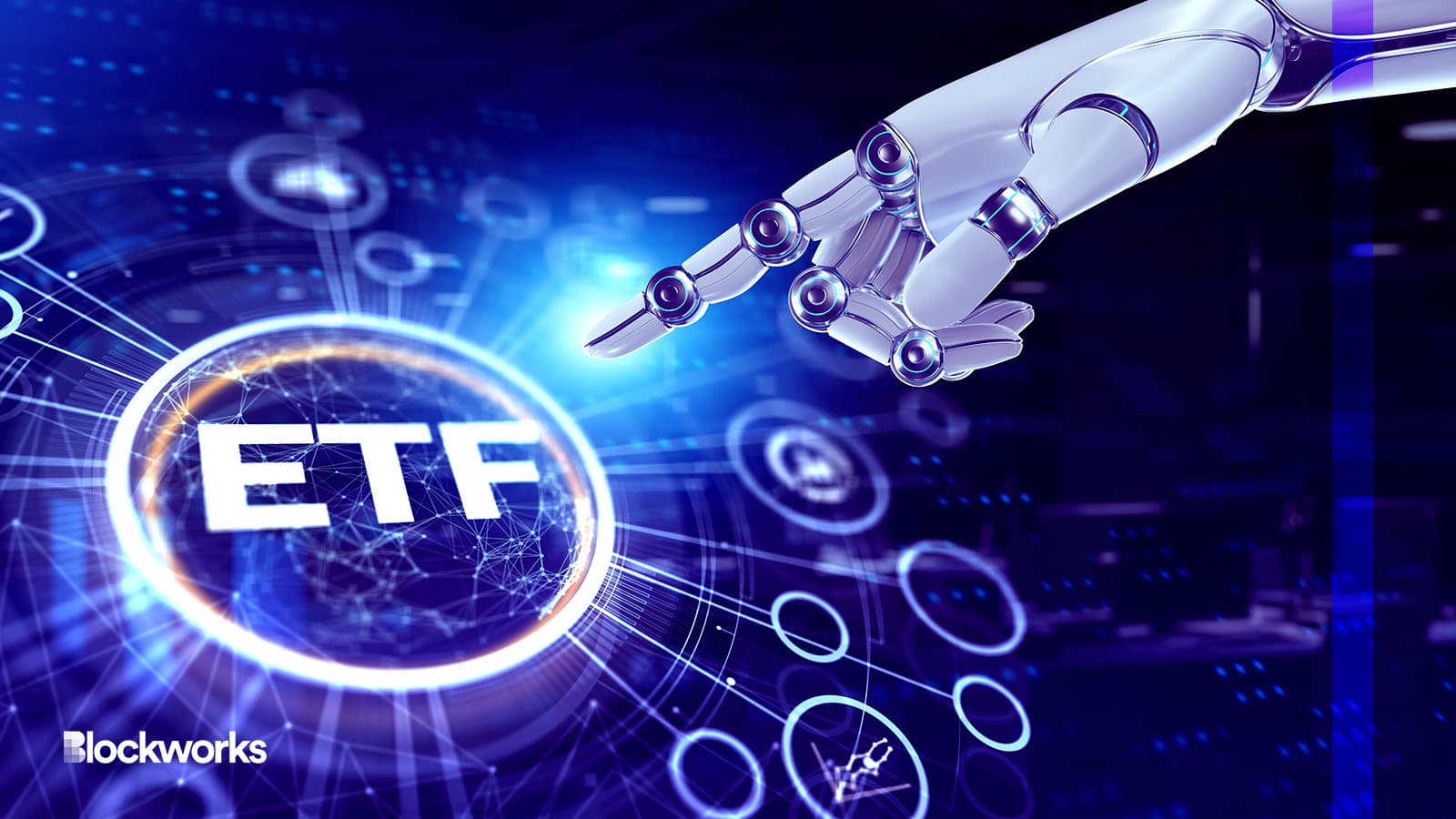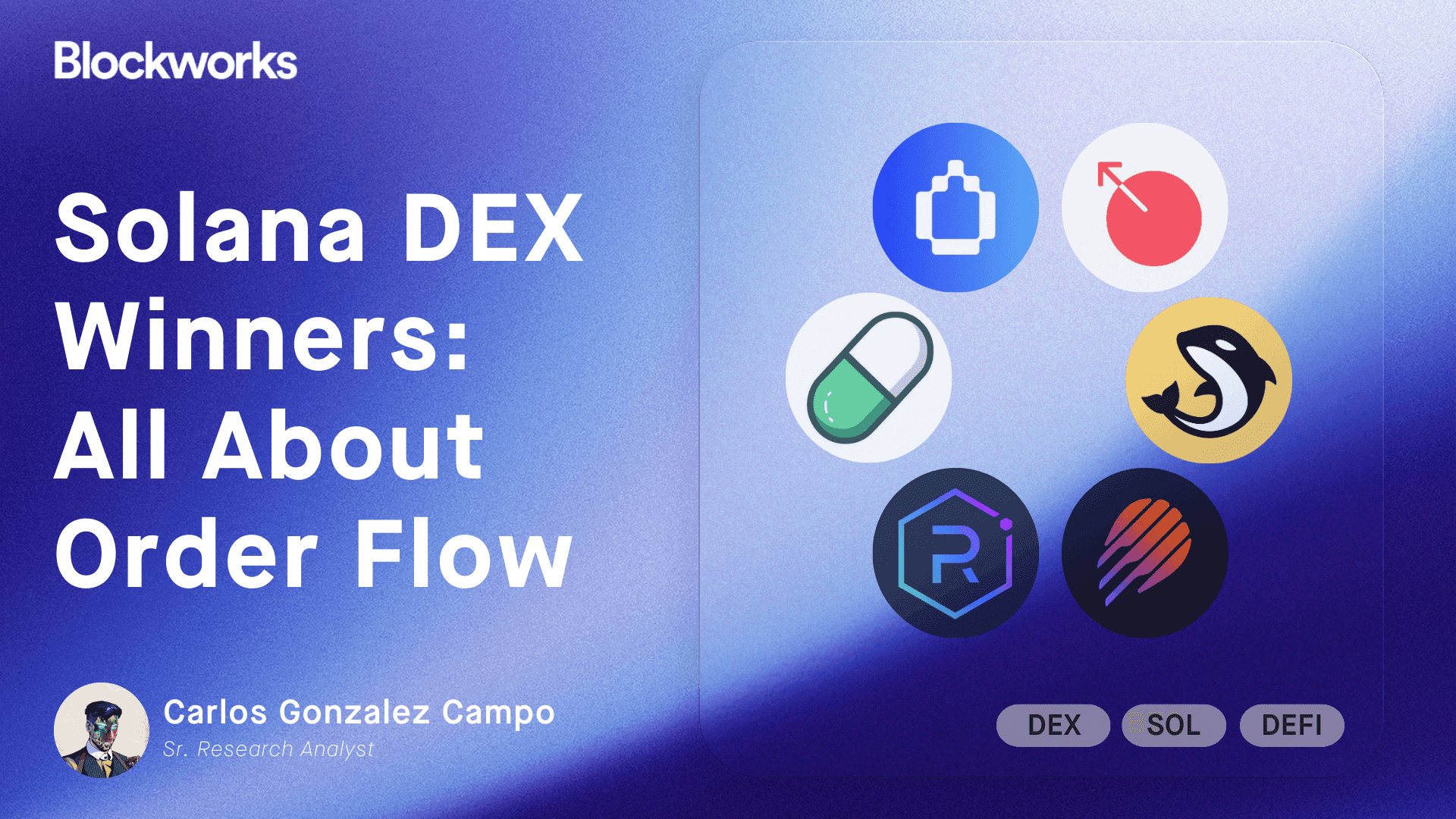Crypto ETFs Outperforming AI by 26% YTD
Crypto’s best-performing ETF this year, VanEck’s Digital Transformation ETF, is up 67% compared to AI’s top performer, Direxion Daily Robotics’s Index, at 32%

SWKStock/Shutterstock modified by Blockworks
Artificial intelligence continues to grip the imagination of traditional market participants over its potential to disrupt entire sectors of the economy, though crypto is still miles ahead this year.
Several crypto-related exchange-traded funds (ETFs) are up between 9% and 64% in year-to-date terms, beating out the more mildly performing AI ETFs, up between 4% and 32%.
Global X Robotics & Artificial Intelligence’s ETF (BOTZ) for instance, is up 16% YTD while Cathie Wood’s ARK Autonomous Technology & Robotics ETF (ARKQ) has risen 18%.
Taking a look at crypto funds — the picture of whose ahead becomes clearer. Of the 39 AI/robotics ETFs Blockworks analyzed, performance across the board averaged around 12.4%. Crypto’s ETF performance for the year is averaging around 38.3% — a difference of roughly 26%.
VanEck’s Digital Transformation ETF (DAPP), the sector’s best-performing fund, is up a whopping 67% since the new year began. DAPP’s top 15 holdings include the likes of Coinbase, Block Inc, Bitfarms and Riot Platforms — all listed on major US exchanges.
That’s followed closely by Global X’s Blockchain ETF (BKCH) at 64% YTD and Bitwise’s Crypto Industry Innovators ETF (BITQ) — up 61% over the same period.
Like DAPP, both funds track roughly the same publicly-traded crypto and blockchain firms, as the choice remains relative to its more developed and long-standing AI cousins.
For the AI and robotics sector, performance is more muted, at least as the second month of the year gets underway.
Direxion Daily Robotics, Artificial Intelligence & Automation Index (UBOT) is topping the list among best-performing AI-related ETFs this year, up 32%. But, it should be noted, UBOT features one of the lowest make-up of assets in its fund, when compared to its peers — totaling just $18 million.
Crypto funds total assets are also modest, averaging around $95 million, with one outlier — the $431 million Amplify Transformational Data Sharing ETF (BLOK) — up 25%.
By comparison, the average total funds in AI ETFs stand at roughly $5.89 billion, likely due to greater enthusiasm around the tech over crypto and blockchain, which is currently experiencing a lull.
Recently renewed interest in AI, courtesy of OpenAI’s ChatGPT 3 language model, Tesla’s self-driving cars and Jasper.ai’s ability to create art has led to an explosion of new business ideas.
An analysis by global “big-4” accounting firm PricewaterhouseCoopers (PwC) predicts the AI sector to contribute $15.7 trillion to the world’s gross domestic product by 2030.
Of that figure, roughly 6.6 trillion is likely to come from increased productivity while $9.1 trillion will derive from “consumption-side effects,” PwC said.
Cathie Wood’s Ark Invest expects blockchain and crypto to match that. The firm claims over the next 10 years, cryptocurrencies and smart contracts could command $20 trillion and $5 trillion in market value, respectively.
What does ChatGPT have to say about that?
Fair enough.






